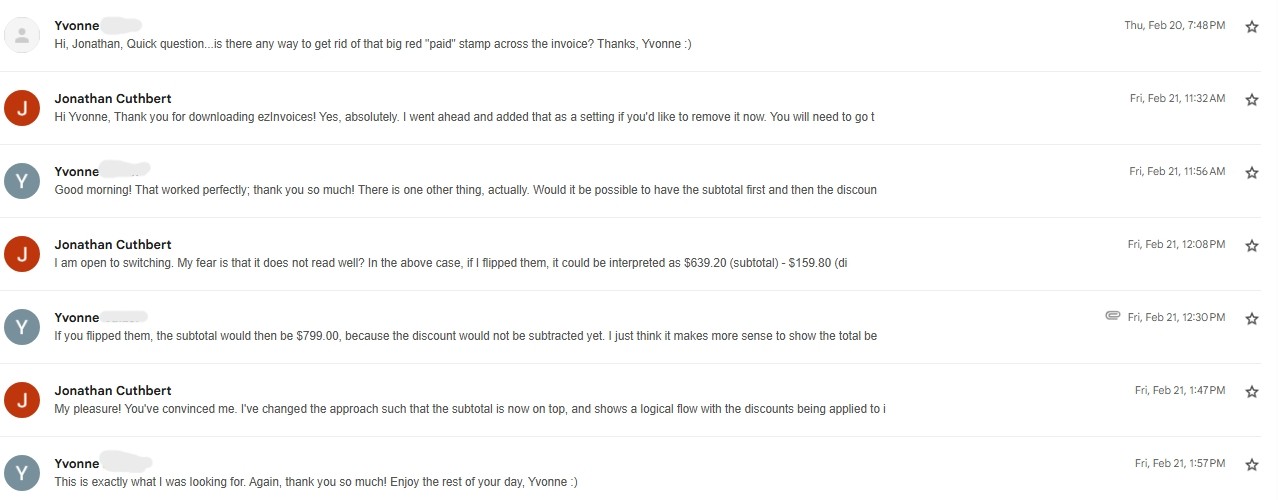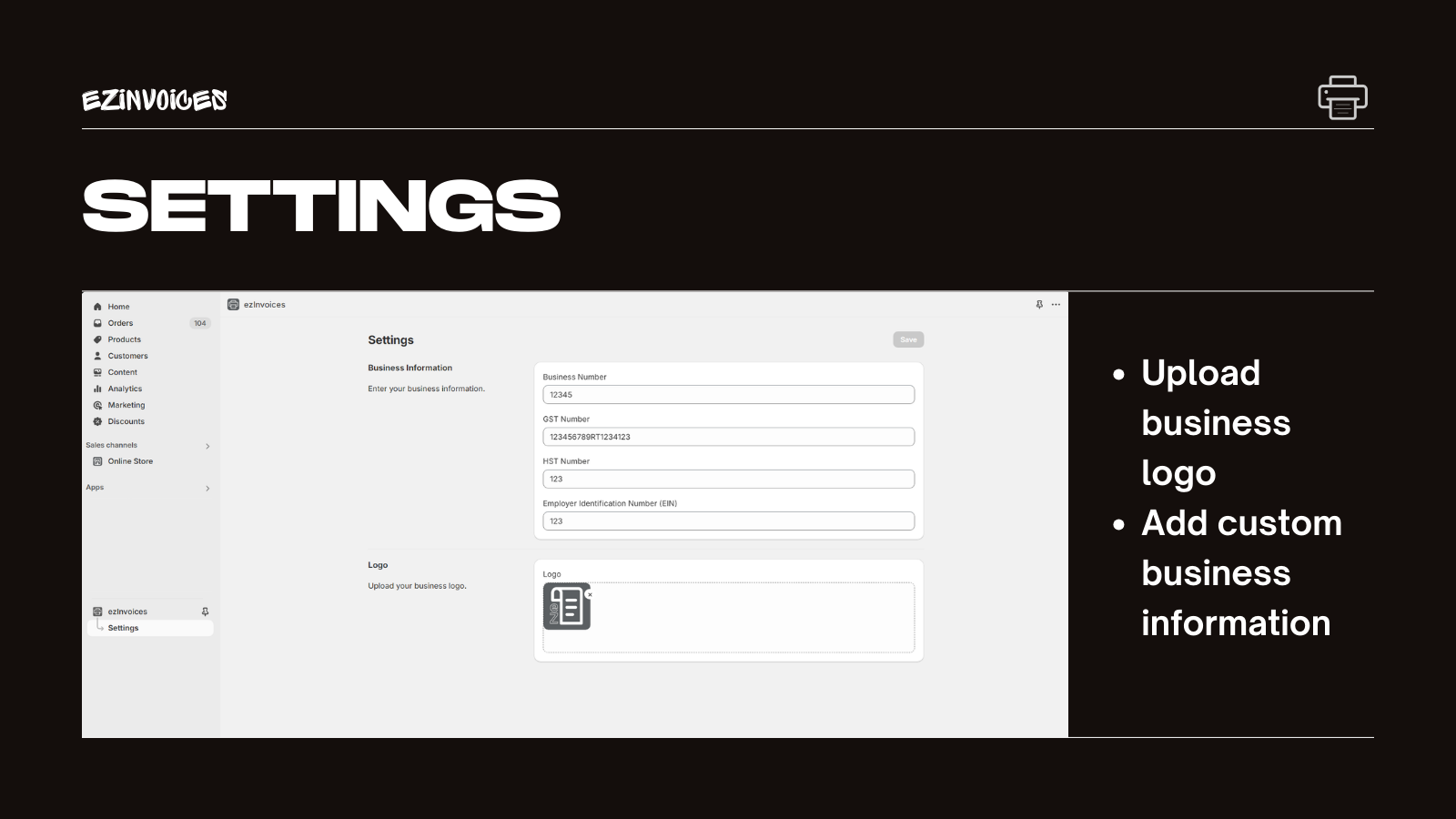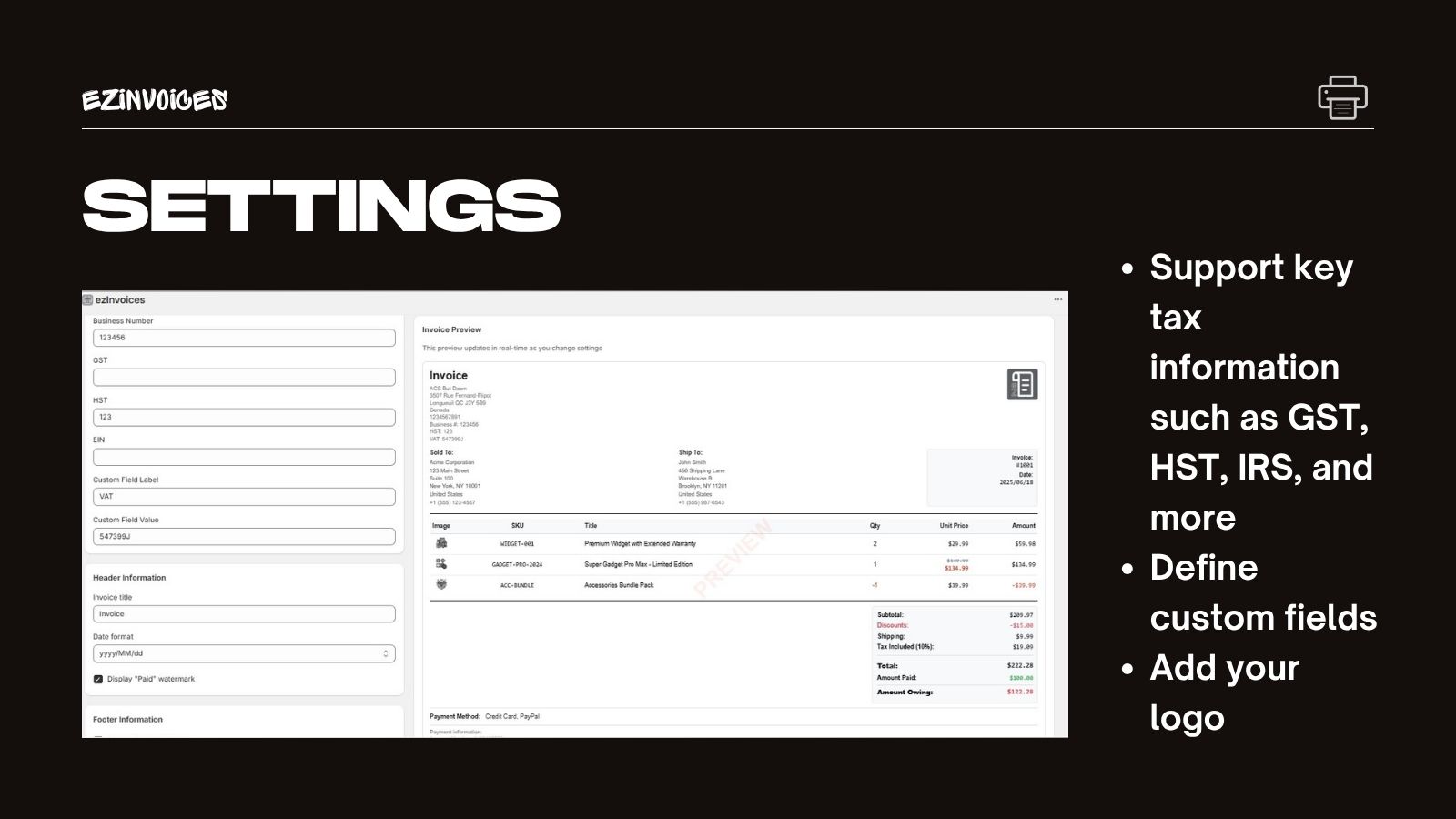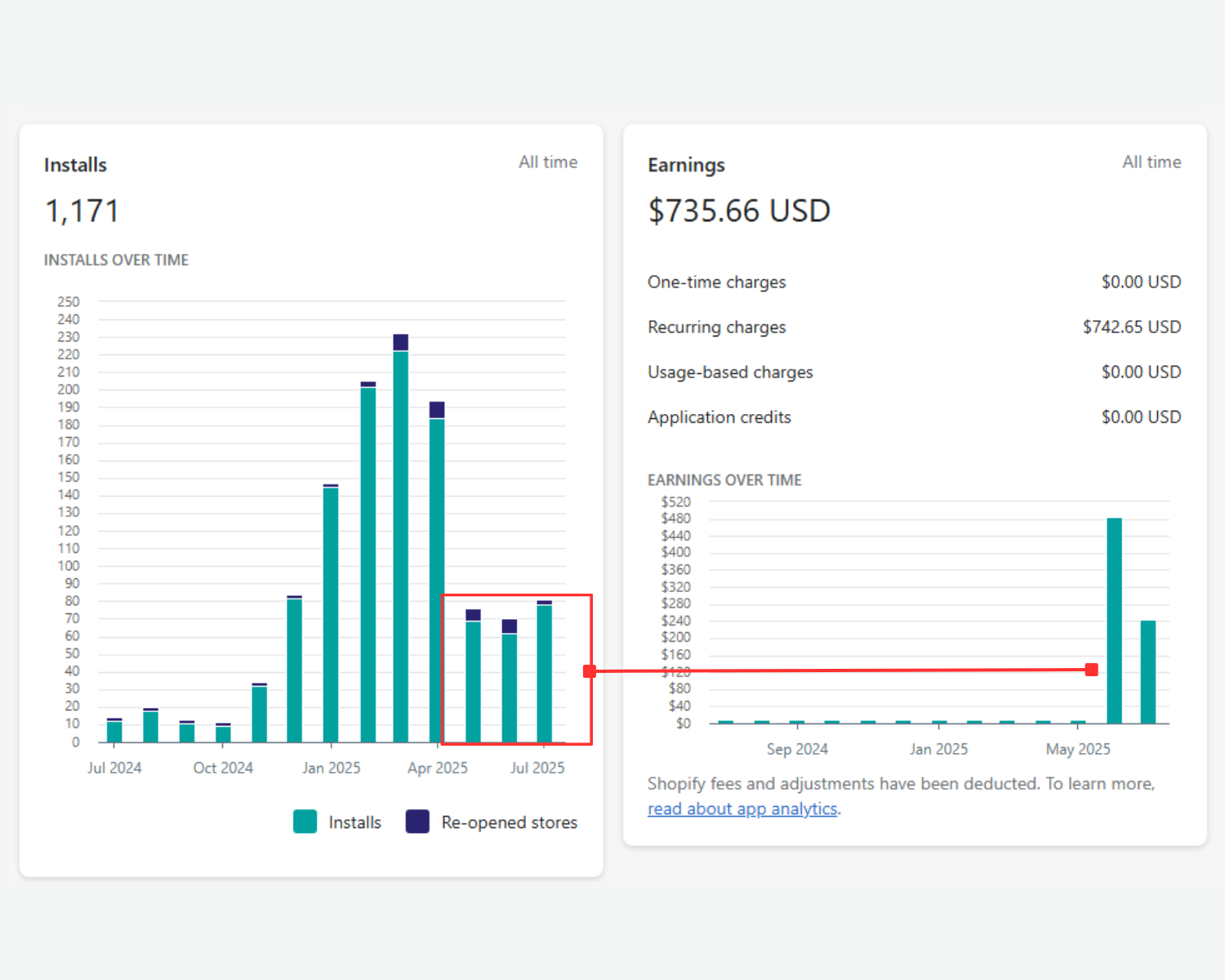
How I Grew My Shopify App to 587 Merchants in One Year
The exact strategies I used to grow ezInvoices from 0 to 587 merchants with zero marketing budget. Real data, failed experiments, and actionable tactics included.
Let me start with what I didn't do: I didn't run Facebook ads, hire influencers, or spend thousands on ASO (App Store Optimization) with those agencies that reach out to you claiming to get you 1000s of installs. I didn't have a pre-launch email list or a Twitter following. I had exactly $0 marketing budget and a full-time job.
What I did have was persistence, a genuine desire to help merchants, and a willingness to do things that don't scale.
This is the real story of how I grew ezInvoices ↗ from 0 to 587 merchants in 12 months.
Why Traditional Growth Tactics Weren't An Option
Before diving into what worked, let's address why I couldn't follow the typical SaaS playbook:
Paid Ads: With server costs already coming out of pocket and no revenue for the first 9 months, paid acquisition was impossible.
Influencer Partnerships: The Shopify influencer space is expensive, and without social proof (reviews, installs), why would they promote an unknown app?
I needed growth strategies that required time, not money. Here's what actually worked.

The Growth Strategies That Actually Worked
1. Community Forum Marketing: The Foundation
The Shopify Community Forums ↗ became my primary growth channel. But this wasn't about spamming links – it was about genuinely helping merchants while naturally mentioning my solution when relevant.
My Approach:
I would search for keywords related to my app:
- "invoices"
- "pdf invoice"
- "how to make an invoice on shopify"
When I found relevant threads, my response was always authentic: I explained that I was looking for the same thing, couldn't find a good solution, so I took matters into my own hands and built this app.
This approach resonated because:
- I was a merchant who understood their problem
- I wasn't just promoting - I was sharing my journey
- The solution came from genuine need, not opportunism
The Power of Finding That One Thread: Here's the truth: all it takes is a single thread to change your app's trajectory. In October 2024, I found a high-traffic discussion with 15+ frustrated merchants all experiencing the same problem. The thread had thousands of views - clearly a popular pain point in the invoice printing space.
Look for these golden threads:
- High view count (3,000+ views)
- Multiple merchants describing the same problem
- Recent activity but ongoing frustration
- Problems that existing solutions aren't solving well
My single, detailed response to that thread became my #1 traffic driver for 4 months. The lesson? Don't spray and pray across dozens of threads. Find the high-traffic discussions where merchants are actively seeking solutions.
You can see the effect in my growth chart - that October forum activity fueled our growth toward 400 merchants.
2. The Fast Support Strategy: Building Trust One Merchant at a Time
I never asked for reviews. Instead, I focused on exceeding expectations with support speed.
Real Example from My Support Timeline:

Here's what happened:
- Feb 20, 7:48 PM: Merchant emails with a feature request
- Feb 21, 11:32 AM: I respond saying I've completed their request
- 11:56 AM: They confirm it works perfectly and ask for another feature
- 1:47 PM: I message back - second request is done
- 1:57 PM: "Thank you this is exactly what I wanted"
Less than 24 hours from request to implementation. Twice.
This wasn't sustainable forever, but in the early days, this level of responsiveness:
- Blew merchants' minds (they expected days or weeks)
- Created passionate advocates
- Led to organic reviews and recommendations
The Compound Effect:
- 1st review → +15% install rate
- 5th review → +40% install rate
- BFS badge → +25% additional boost
Not everyone gave me a review after our interactions (and I never even asked them!), but the ones that did I am so appreciative and their reviews feel much more natural.
It wasn't for awhile until I implemented the Shopify App Bridge Reviews API to make leaving reviews even easier from within the app. But I still never asked for reviews, I just made it easy for them to leave one.
3. Building for the World: Multi-Language Support from Day One
While there wasn't one "viral" feature that drove growth, I'm most proud of launching with support for 8 languages from day one. This decision:
- Opened up international markets immediately
- Showed attention to detail and inclusivity
- Set us apart from competitors who only supported English
Growth wasn't about one big feature - it was the slow, steady accumulation of improvements that made the app better for everyone.
Power Users vs. Casual Users:
| User Type | % of Base | Feature Requests | Built? |
|---|---|---|---|
| Power Users (1000+ invoices/mo) | 5% | Bulk operations, API | ✅ |
| Regular Users (50-200/mo) | 30% | Templates, branding | ✅ |
| Casual Users (<10/mo) | 65% | Complex workflows | ❌ |
Features That Drove Word-of-Mouth:
- Multi-location support - Enterprises told other enterprises
- Custom templates - Agencies recommended to clients
- Bulk invoice generation - Saved hours, sparked conversations
Features I Said No To:
- Email marketing integration (scope creep; too complicated; too expensive)
- Inventory management (different product)
- Complex approval workflows (wrong market)
4. The Built for Shopify Achievement
Getting Built for Shopify ↗ status in June 2025 created a noticeable boost in installs. The process took about 2-3 months, mainly because of my lack of time in responding to feedback (I was working on my other app, Sagify).
The feedback from the BFS team was minimal:
- Implement the Contextual Save Bar ↗
- Improve the visual settings page
- Fix some translation issues
Once approved, the BFS badge provided:
- Increased visibility (merchants can filter by this)
- Immediate credibility boost
- A nice uptick in downloads
Impact on Installs:
- Week before BFS: ~8 installs
- Week after BFS: ~19 installs
- Sustained increase: +35%
5. Updating Your App Store Listing
I think this one is pretty underrated, but I updated my app store listing a few times over the year. I remember distinctively after setting up Google Analytics for the app store, I was able to see search terms that were driving installs. I then used those terms to update my app store listing, and I did notice a small bump in installs after doing so.
As I found add new features, big or small, I would find ways to make sure those appeared in the app store listing. I would update the screenshots as well. Here's an example of what settings page looked like when ezInvoices first launched. There were only four settings to set! Quite the difference.


Content Marketing: The Long Game
I am working on this now, but it was not my main growth driver. Most Shopify merchants are googling their issues too much unless they are looking for a specific solution or a how-to guide. Merchants are either scouring the forums, reddit, or the Shopify App Store. However, blogs have their value, and I believe over the term they can drive growth especially if you are writing about topics that don't exist yet. It is something I plan on working on in our second year with blogs like this one, and building in the public and helping other developers.
Growth Metrics Deep Dive

Month-by-Month Merchant Acquisition
| Period | Strategy Focus | New Merchants | Growth Rate |
|---|---|---|---|
| Jul-Sep 2024 | Internal use | 25 | Baseline |
| Oct-Nov 2024 | Forum posts | 32 | +28% |
| Dec 2024 | First review | 48 | +50% |
| Jan-Mar 2025 | Word of mouth | 285 | +493% |
| Apr 2025 | Billing introduced | 71 | -75% |
| May-Jun 2025 | BFS prep | 85 | +19% |
| Jul 2025 | BFS achieved | 41 | +47%* |
*Compared to pre-BFS baseline
Correlation Between Reviews and Install Spikes
Each review created a measurable impact:
- Review #1: +32 installs within 2 weeks
- Review #5: Unlocked BFS eligibility
- Review #9: Helped maintain momentum post-billing
Impact of Billing on Growth Trajectory
Before Billing (Months 1-9):
- Install velocity: 40-50/month
- Uninstall rate: 55%
After Billing (Months 10-12):
- Install velocity: 20-30/month (-40%)
- Uninstall rate: 35% (-36%)
Key Insight: Fewer installs, but higher quality merchants.
Retention vs. Acquisition Balance
Total installs: 1,171 Total uninstalls: 584 Net retention: 50%
But the story changes with billing:
- Free users retention: 42%
- Paid users retention: 89%
What Didn't Work
Shopify App Developer Forums / Slack / Discord
While agencies hang out in these spaces they are not actively looking for apps. And, while it is fun to shout your achievements to fellow builders, everyone is so busy building their own thing that you're not going to anything meaningful here. I'd probably only recommend using these channels once a month or every couple of months to share your wins or get feedback on your app.
Social Media
I don't have social media accounts for my company simply because I don't have the time to manage them. Recently, I start our companies LinkedIn page ↗ and have been posting there, and mainly for our other app, Sagify. But I haven't seen any traction from it yet.
The Reality of Growth Without a Budget
Looking at my timeline, you can see four distinct phases:
- The Quiet Start (Jul-Oct 2024): Hovering under 30 merchants while figuring things out
- The Forum Effect (Oct-Apr 2025): Steady climb from 30 to ~400 merchants
- The Billing Adjustment (Apr-May 2025): Growth slowed when I introduced paid plans
- The BFS Boost (Jun-Jul 2025): New momentum with official recognition
Total stats after one year:
- 587 active merchants
- 1,171 total installs
- 584 uninstalls
- ~50% retention rate
What I Learned About Billing
Introducing billing in April 2025 was necessary but painful:
- Growth rate dropped significantly
- Some power users (doing 1,000+ invoices/month) churned
- But interestingly, uninstalls actually decreased
The merchants who stayed after billing were more engaged. As I noted: "All the feedback I've ever received on my app were from stores that would eventually sign up for a subscription."
Key insight: Free users rarely provide feedback and aren't invested in your product. They don't care to report issues or communicate with you.
Key Takeaways for Your First Year
1. Authenticity Beats Marketing Tactics
My forum posts worked because I genuinely was a merchant who needed this solution. Share your real story.
2. Speed Beats Features Early On
Responding to support in hours (not days) and implementing requests in 24 hours created more advocates than any feature could.
3. Think Global from Day One
8-language support opened doors I didn't expect. Don't limit yourself to English-only markets.
4. Introduce Billing Earlier Than You Think
I waited 9 months. In retrospect, month 3-4 would have been better. You want paying customers shaping your product direction.
5. One Good Forum Thread Can Change Everything
Find where your ideal customers are already asking for help. One well-placed, helpful response can drive months of growth.
The Truth Nobody Tells You
Growing to 587 merchants generated $735.66 in total revenue. After Shopify's cut and server costs, that's not profitable. But profitability wasn't the year one goal.
Year one was about:
- Validating the idea
- Building a foundation
- Learning the ecosystem
- Creating happy customers
Year two is when the real business begins.
Your Action Plan
If you're starting a Shopify app with no budget:
- Find your forums: Where are merchants asking for solutions?
- Share your story: "I had this problem too, so I built..."
- Respond fast: Set a <24 hour support SLA
- Go global: Add translations early
- Get reviews: Through great support, not requests
- Apply for BFS: As soon as you hit 50 installs + 5 reviews
Remember: Every successful Shopify app started with zero merchants. The difference is who kept going.
This is part 2 of my series on building a bootstrapped Shopify app:
- Part 1: My Shopify App After One Year - The numbers and lessons from year one
- Part 3: Is Built For Shopify Worth It? - Real data on BFS impact
- Part 4: Do Shopify Apps Make Money? - First year revenue report
Follow the journey at ezApps.io or try ezInvoices ↗ to see these strategies in action.
Share this article: